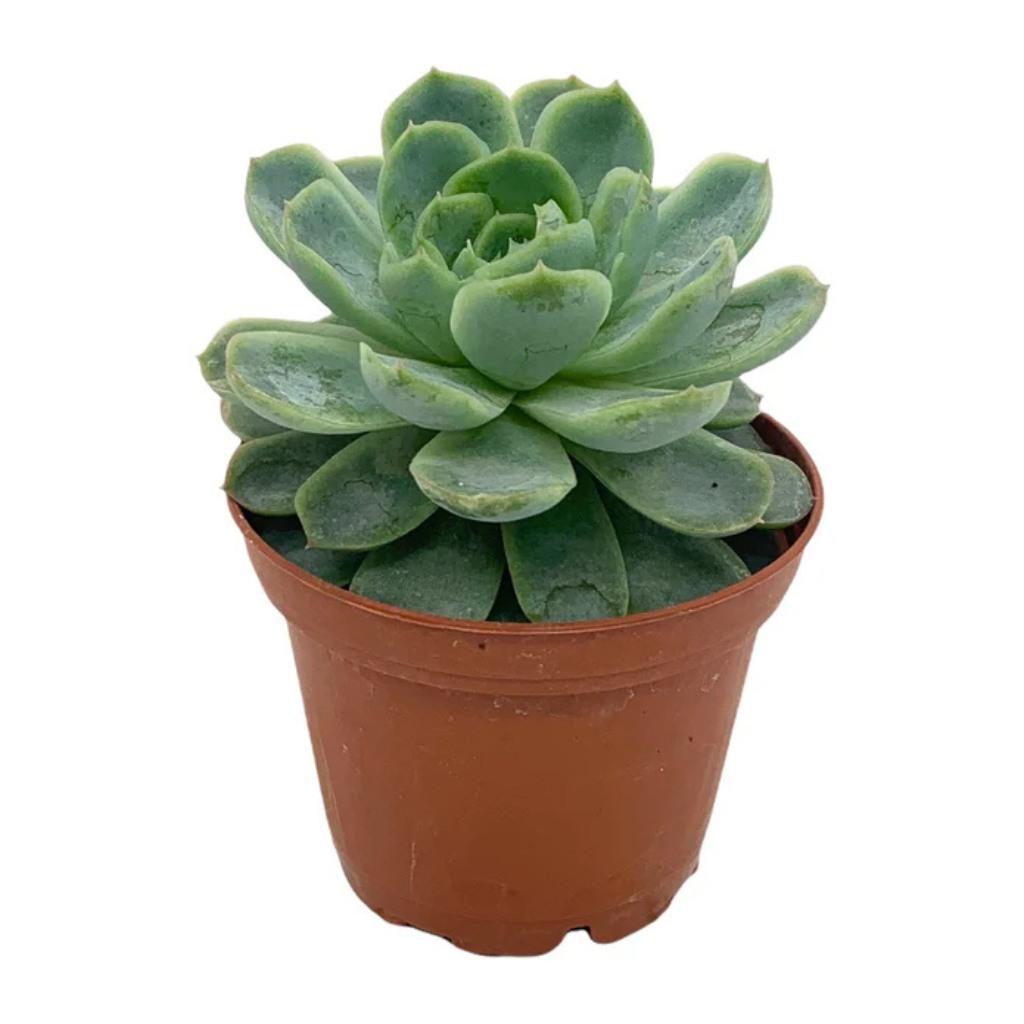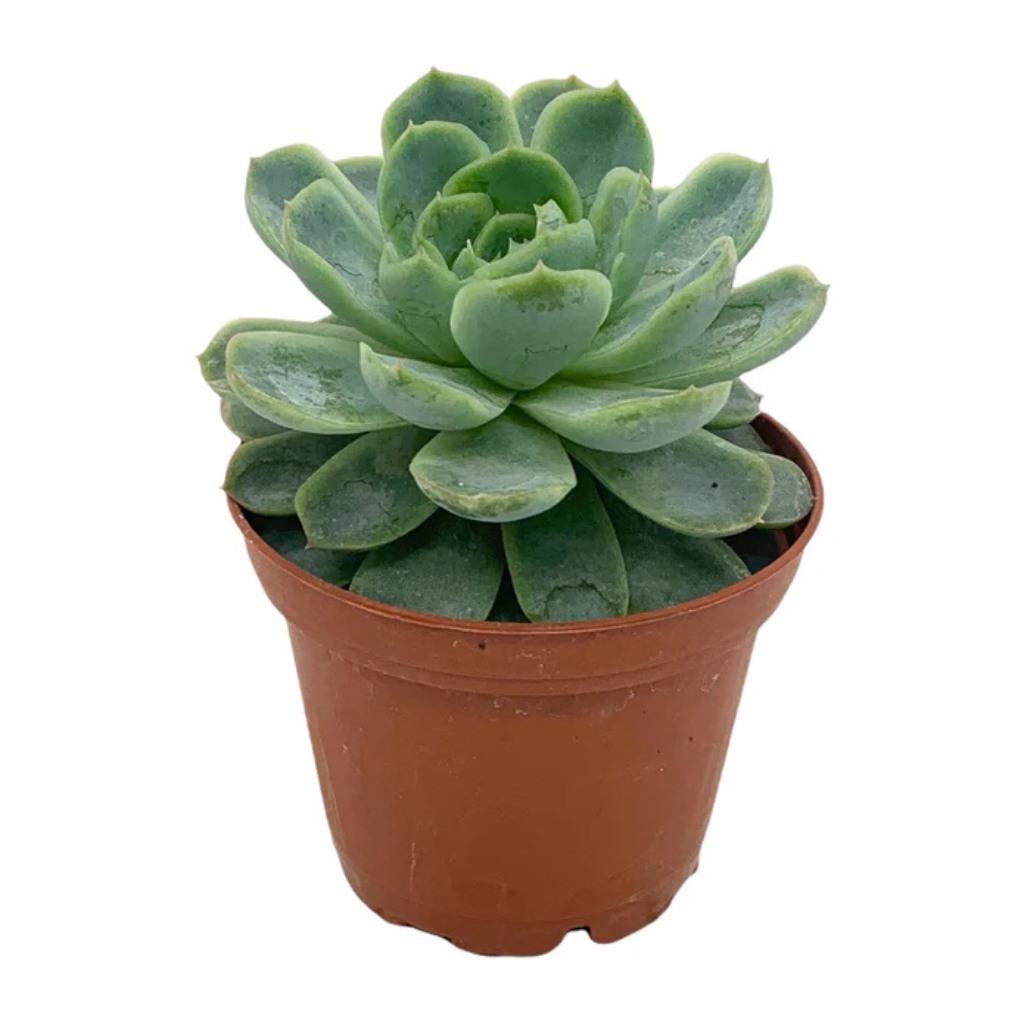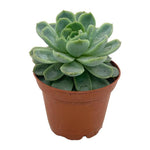
Echeveria Vertis Succulent
$12.79
Unit price perEstimated delivery between 29 August and 31 August.
At Divine Root, we are committed to delivering healthy, high-quality indoor plants to our customers. While we do not accept returns due to the perishable nature of live plants, we offer a 30-day plant health guarantee and store credit for qualifying issues. Please read our Refund Policy carefully to understand how we handle concerns regarding plant health, shipping, and order

Echeveria Vertis Care Guide & Presentation
Pet Safe
Yes
Water Needs
Low
Sunlight
Bright
Hardiness Zones
9-11
Temperature
60°F to 80°F
Suitable Space
Rock gardens, containers, indoor decor
Humidity
Low
Plant Class
Succulent
Plant Type
Perennial
Plant Characteristics
Rosette-shaped, compact
Genus
Echeveria
Fertilizing
Once per season
Re-potting
2-3 Years
Cleaning
As needed
Propagation
Offsets
Echeveria Vertis Succulent: Overview
The Echeveria Vertis is a captivating succulent known for its symmetrical rosettes and vibrant foliage. While its exact origins are debated, this hybrid likely stems from the Crassulaceae family's diverse Echeveria lineage. Its fleshy, spoon-shaped leaves transition from soft green at the center to pink or coral hues at the tips, especially under bright light. The rosettes grow compact and upright, reaching 6-8 inches in diameter, and may produce tall flower stalks with bell-shaped orange or yellow blooms in late spring or summer.
Ideal for containers, rock gardens, or indoor displays, this drought-tolerant succulent thrives in well-draining soil and sunny conditions. Its color-shifting foliage and low-maintenance nature make it a favorite for both beginners and collectors. Compared to similar varieties like Echeveria Perle von Nürnberg or Echeveria Lola, the Vertis stands out for its gradient leaf coloration and sturdy growth habit.
Echeveria Vertis: Benefits
- Aesthetic versatility: Adds vibrant color gradients to modern, desert-themed, or eclectic decor.
- Drought-tolerant: Requires minimal watering, perfect for water-wise gardens or busy plant owners.
- Air-purifying: Enhances indoor air quality by absorbing CO2 and releasing oxygen.
- Non-toxic: Safe for homes with pets and children.
- Compact size: Ideal for small spaces like windowsills, terrariums, or office desks.
Echeveria Vertis Care Guide
Light and Water
- Light: Prefers full sun to bright indirect light (6+ hours daily). Direct sunlight intensifies leaf colors; acclimate gradually to prevent scorching.
- Water: Water deeply but infrequently every 3-4 weeks in summer. Let the soil dry completely between waterings. Reduce to monthly in winter.
Soil and Fertilizing
- Soil: Use a gritty, well-draining cactus/succulent mix (e.g., 50% potting soil + 50% perlite/pumice).
- Fertilizer: Apply a diluted succulent fertilizer (5-10-5) once in spring and mid-summer.
Temperature and Humidity
- Temperature: Ideal range: 60-80°F (15-27°C). Tolerates brief frost down to 25°F (-4°C) if kept dry.
- Humidity: Thrives in dry conditions (10-30% humidity). Avoid high humidity to prevent rot.
Pruning, Propagating, and Repotting
- Pruning: Remove dead or damaged leaves to maintain rosette symmetry. Trim spent flower stalks after blooming.
- Propagating: Propagate via offsets, leaf cuttings, or stem cuttings. Allow cuttings to be callous for 2-3 days before planting.
- Repotting: Repot every 2-3 years in spring. Use a shallow, wide pot to accommodate its shallow root system.
Common Problems
- Root rot: Overwatering or poor drainage. Ensure pots have drainage holes and the soil dries fully.
- Etiolation (stretching): Insufficient light causes loose, leggy rosettes. Move to a sunnier location.
- Mealybugs or aphids: Treat with neem oil or isopropyl alcohol.
- Faded colors: Inadequate light. Gradually increase sun exposure.
Echeveria Vertis: Best Locations & Uses
- Sunny windowsills: Showcase color gradients under direct morning light.
- Rock gardens or gravel beds: Pair with contrasting succulents like Sedum or Graptopetalum.
- Hanging planters: Highlights compact rosettes in patios or balconies (zones 9-11 outdoors).
- Office decor: Thrives under bright artificial light with minimal care.
- Pet-friendly spaces: Safe for households with cats or dogs.


